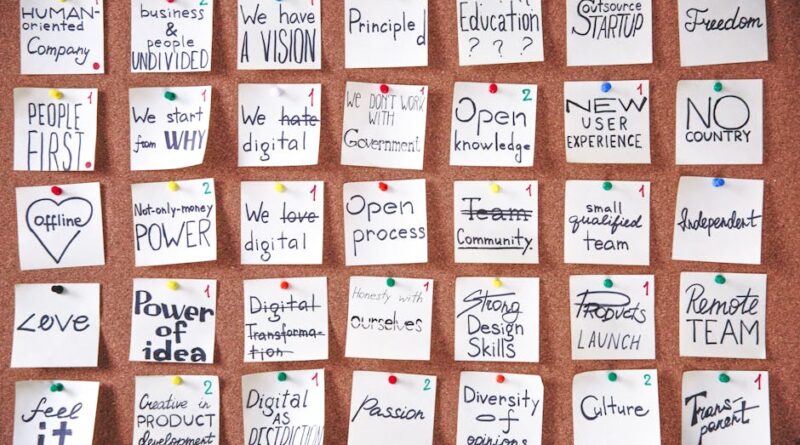Web Development Portfolio Ideas to Inspire You
Are you looking to build an eye-catching web development portfolio? you’re not alone! Many developers face this challenge. A strong portfolio can showcase your skills and attract potential employers. In this article, well explore creative ideas to help you stand out. Lets dive in!
What Makes a Great Web Development Portfolio?

First, lets discuss what makes a portfolio effective. A great web development portfolio should be:
- Visually appealing
- User-friendly
- Showcasing your best work
- Highlighting your skills and unique style
Think of your portfolio as your personal brand. it’s your chance to make a first impression. Just like youd dress up for a job interview, your portfolio should look professional and polished.
How Can You Showcase Your Skills?

Your portfolio should highlight your skills clearly. Here are some ideas to consider:
- Project Showcases: Include 3-5 of your best projects. Each project should have a brief description, key features, and the tools you used.
- Case Studies: Dive deep into a few selected projects. Explain your design process, challenges faced, and solutions provided.
- Interactive Elements: Add interactive demos or links to live projects. This gives visitors a real feel for your work.
For example, if you built a website for a local bakery, show off the final product. Explain how you improved their online presence. Share the tools you used, like HTML, CSS, or JavaScript.
What Types of Projects Should You Include?

Now, lets talk about the kinds of projects that can boost your portfolio. Here are some valuable suggestions:
- Personal Projects: Build something you love. Whether it’s a blog, a game, or a portfolio site, personal projects showcase your passion.
- Freelance Work: If youve done any freelance gigs, include them! They show real-world experience and client interaction.
- Open Source Contributions: Participating in open source projects demonstrates teamwork and coding skills.
Think about your favorite hobbies. Can you create a website around them? This adds a personal touch and shows your unique perspective.
How Can You Make Your Portfolio Stand Out?

With so many portfolios out there, how can you make yours shine? Here are some creative ideas:
- Unique Design: Use a layout that reflects your personality. don’t be afraid to experiment with colors and fonts.
- Storytelling: Tell the story behind your projects. Explain your thought process and how you overcame challenges.
- Video Introductions: Create a short video introducing yourself and your work. This adds a personal touch.
For instance, you could use a split-screen design showcasing your projects on one side and your story on the other. This engages visitors and illustrates your design skills.
Do You Need to Include Testimonials?
Absolutely! Testimonials can add credibility to your portfolio. Reach out to past clients or employers and ask for feedback. Heres why testimonials are important:
- They build trust with potential clients.
- They highlight your strengths from someone else’s perspective.
- They differentiate you from others who may not have any.
Include short quotes and names (with permission) in your portfolio. If you worked on a team, ask your teammates for their thoughts too!
What About Blogging?
Blogging can enhance your portfolio by demonstrating your expertise. Share your knowledge about web development, coding tips, or industry trends. Heres how it can help:
- It establishes you as a knowledgeable source.
- It adds fresh content to your portfolio.
- It can improve your websites SEO.
Writing a blog post about a challenging project can show your problem-solving skills and thought process. Plus, it helps potential employers see your communication abilities.
How Important is Mobile Responsiveness?
In todays world, mobile responsiveness is a must! Many users browse on their phones. Make sure your portfolio looks great on all devices. Heres how:
- Use flexible grid layouts.
- Optimize images for fast loading.
- Test on various screen sizes.
Just like your favorite websites, your portfolio should be easy to navigate on any device. This shows you understand modern web practices.
Where Can You Host Your Portfolio?
Choosing the right platform to showcase your portfolio is crucial. Here are some popular options:
- GitHub Pages: Great for developers to host static websites.
- Netlify: Easy to set up and offers free hosting for small projects.
- WordPress: A user-friendly option for those who want to blog too.
Each platform has it’s strengths. Choose one that aligns with your goals and skills.
What Common Mistakes Should You Avoid?
Even the best developers make mistakes. Here are some common pitfalls to avoid:
- Overloading with Projects: It’s better to showcase a few strong projects than many mediocre ones.
- Neglecting Updates: Keep your portfolio current. Regular updates show growth and ongoing learning.
- Poor Navigation: Ensure your site is easy to navigate. Visitors should find what they need quickly.
Remember, quality over quantity! A few well-explained projects can make a bigger impact than many half-finished ones.
How Can You Get Feedback on Your Portfolio?
Gathering feedback is essential for improvement. Here are some ways to get constructive criticism:
- Peer Reviews: Ask fellow developers to look at your portfolio. They can provide insights from a technical perspective.
- Join Online Communities: Platforms like Reddit or Stack Overflow have active communities willing to help.
- Networking: Attend local meetups or webinars to share your work and get feedback.
Feedback helps you see your portfolio from another’s perspective. Use it to enhance your presentation and content.
What Are the Key Takeaways for Your Portfolio?
Creating a compelling web development portfolio takes time and effort. Heres a quick recap:
- Showcase your best work with clear descriptions.
- Include a mix of personal and professional projects.
- Use testimonials to build credibility.
- Keep it visually appealing and easy to navigate.
- Update regularly and seek feedback.
Building your portfolio is a journey. Keep experimenting, learning, and growing!
Conclusion: Ready to Start Building?
Your web development portfolio is a reflection of who you are as a developer. Use these ideas to inspire your creation. Remember to stay true to your unique style and voice. The web development world is vast, and your portfolio can help you carve out your niche.
Now, go ahead and start building! If you want more tips on personal branding, check out this related post. And don’t forget to keep your portfolio updated as you grow.
Happy coding!



